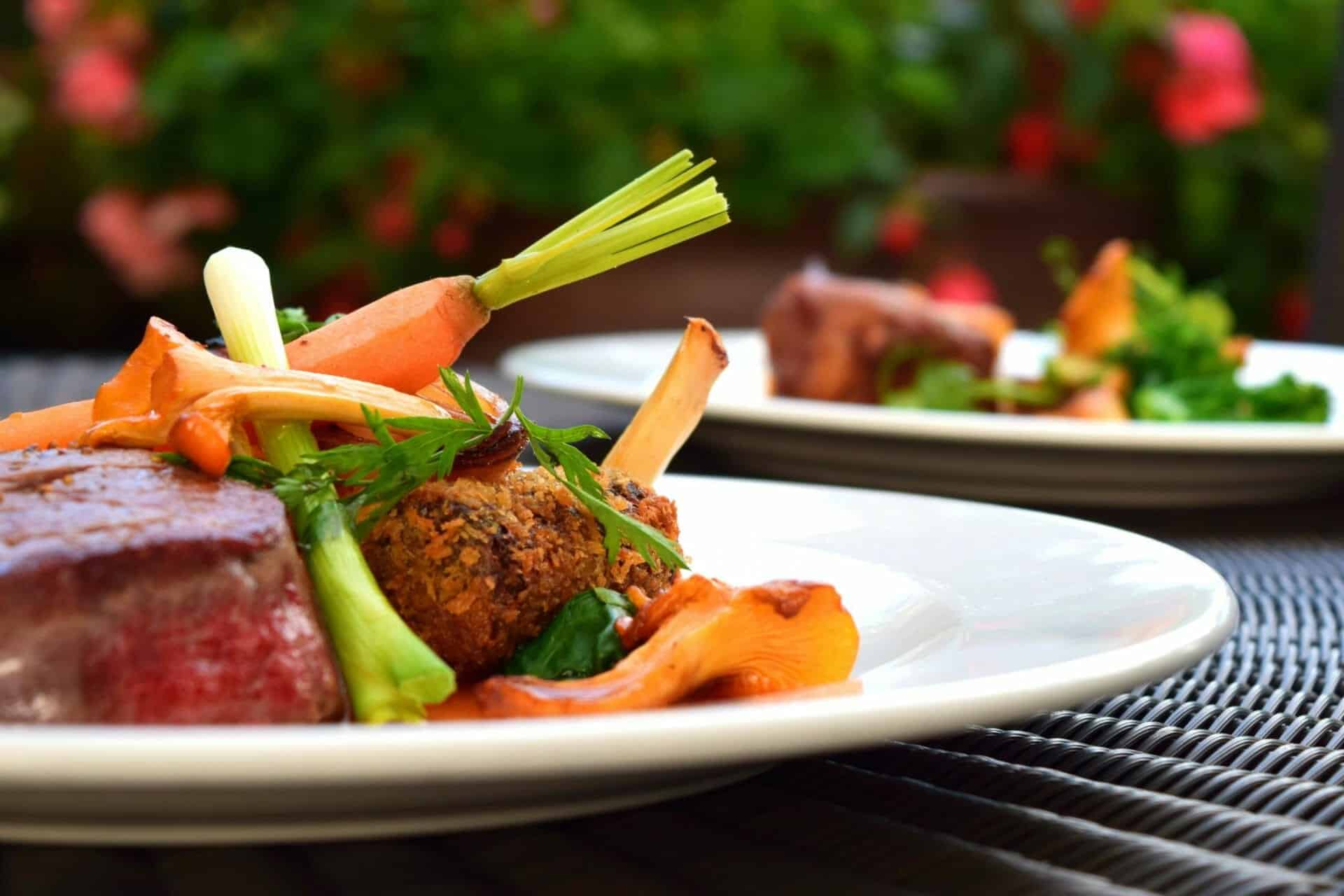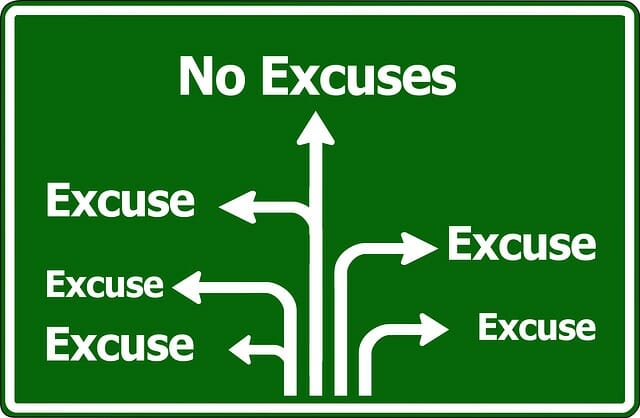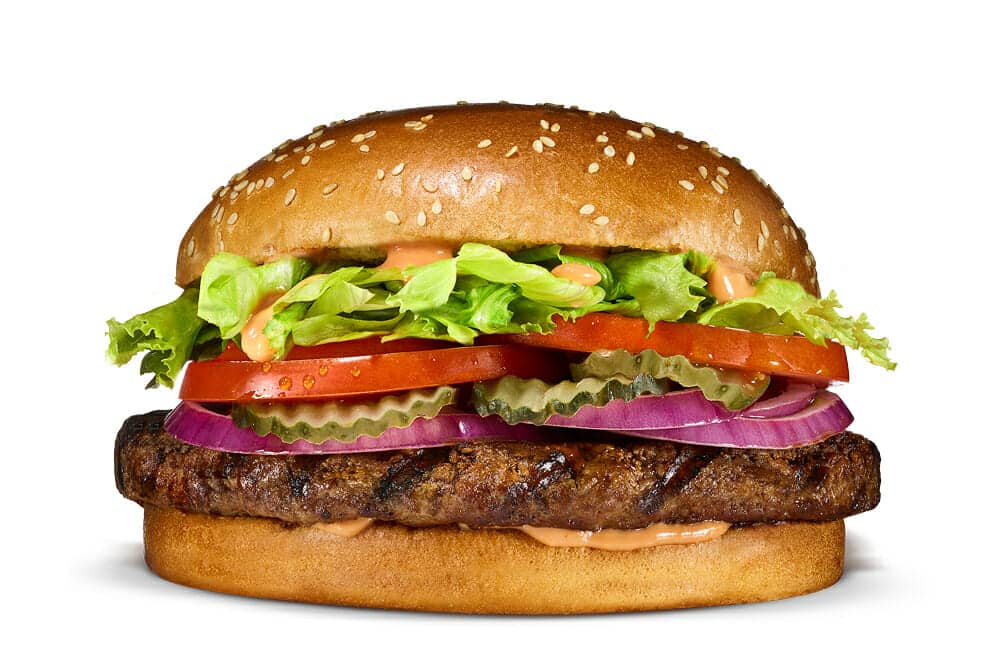You’ve probably tried everything when it comes to fitness. 1) Eat less, move more 2) Do endless cardio 3) Detox 4) Join a Crossfit gym 5) Amputate a limb … Right? And some of it works for awhile. If you can stick to it. But here’s the thing: For every guru sayin’ this is all it takes… … you’ve got, what, like millions of people who got nowhere trying any or all of it? We do have an obesity epidemic after all. So what gives? I’ll tell ya… The difference between those who make it and those who fail, rinse and repeat… Usually comes down to one of 4 things:
- Information overload. There’s too much info consumption, not enough action.
- No wiggle room. Your diet will fail without room for failure, if you feel me?
- Finding a plan you can follow long enough and consistently enough for permanent results
- Accountability. If it’s only you in the fight, your brain will sabotage you at every turn.
Any of that sound familiar? If so, I’m glad you’re reading this. Just what you need, right? … Another guy claiming his approach to fitness is the ONLY way. Look, I get it. You need another diet strategy like I need a swift kick to the gonads. (Not very badly.) Lucky for you, I don’t have one. What I do have, however, is a smarter, simpler, speedier approach to getting the results you want… even if you’ve tried it all in the past. And since there’s zero chance you believe me, how ‘bout I just tell you?
[FREE FAT LOSS CHALLENGE] Worse genes than Chris Farley and confused about where to start with your diet? You’re not alone…
The good news? I’ve built a full-proof plan and it’s all included in this 5 day fat loss challengeWhat you get:✅ 5-Day Mansformation Diet Cheat Sheet with the 8 step process clients use to lose 50+ pounds of pure fat✅ DAILY coaching from myself✅ Support from 100’s of other men doing the challenge with you
I speak to dozens of guys every day who send me messages telling me things aren’t working anymore. “I’m stuck at this weight no matter what I do” “I used to always be able to follow this diet for awhile and drop 10 lbs but it doesn’t work anymore…” “I can’t gain an ounce of muscle no matter what I try, and my spare tire isn’t going anywhere, either” I get it. You see, your body is programmed to keep you alive. It does a good job of that, but it can be a big pain in the arse when dieting. When you try to outsmart your body, it outsmarts you back. If you try to rush the process, here’s how your body tries to keep your weight steady when you take in less energy and start to lose weight, according to Precision Nutrition…
- Thermic effect of food goes down because you’re eating less.
- Resting metabolic rate goes down because you weigh less.
- Calories burned through physical activity go down.
- Non-exercise activity thermogenesis goes down.
- Calories not absorbed goes down and you absorb more of what you eat because your body senses a calorie deficit.
- Reducing actual calories eaten also causes hunger signals to increase, causing you to crave (and maybe eat) more.
Definitions of each Thermic effect of food (TEF): Every time you eat, a certain percentage of the calories ingested are “burned off” just to digest the food itself. What you eat matters here as some macros are more metabolically demanding to digest.
- Carbohydrates: 5 to 15% of the energy consumed
- Protein: 20 to 35%
- Fats: at most 5 to 15 %
Resting Metabolic Rate (RMR) : RMR is the number of calories you burn each day at rest, just to breathe, think, and live. Non-Exercise Activity Thermogenesis (NEAT): NEAT is the calories you burn through fidgeting, standing, walking and all other physical activities except purposeful exercise.
So, a number of factors are working against you when trying to lose weight… So what can you do if more exercise and less food isn’t really the answer forever? 
Table of Contents
Toggle1. Eat more protein
Protein is essential when losing fat. Protein helps you keep that all-important lean body mass so you don’t look like a bag of milk when you’ve got to your goal weight. When you’re in a significant calorie deficit (i.e. eating less than you burn), your body is happy to feast on muscle for energy. It doesn’t tend to throw out just fat and keep muscle… unless you eat lots of protein. That’s why scale weight is not the only measurement of success. Your diet sucks if it drops as much muscle as it does fat. How much protein then? This is a hotly contested topic with no consensus, depending on who you ask or what your goal is. A good starting point? The Metabolic Blowtorch Diet advocates for one gram per pound of lean muscle mass or (if you can’t determine that) simply start with one gram per pound of bodyweight.
Take home: Just by eating more protein you burn more calories, because of the increased thermic effect of eating. If you eat 100 calories of protein, you’ll only use about 70 calories of it. (remember that embarrassing episode of “meat sweats” at the Brazilian BBQ joint? Yeah, embrace the pit stains.)

2. Build more muscle
Your body burns more calories maintaining muscle tissue than it does fat tissue. How much though? Some experts estimate that each extra pound of muscle you gain burns 30-50 extra calories a day, while others estimate that a pound of muscle burns 6 calories at rest, compared to 2 calories burned by a pound of fat. It’s not a perfect science, and not a huge difference, but it can add up. I believe there’s more to the story here though. The more muscle, the more storage capacity for glycogen (stored carbohydrates in your muscle cells). The more muscle, the more insulin sensitive you are, as Jim and Jay have spoken about ad nauseum. The more muscle, the better your body performs.
Take home: Do everything you can to build and maintain every ounce of lean muscle. Footnote: Muscle isn’t just for looking good. Artero, et al., (2012) did a review of the literature on the effects of increased muscle strength and found that it has a protective effect on all-cause and cancer mortality in healthy middle-aged men, men with high blood pressure, and those with existing heart disease.
3. Eat every damn macronutrient (within reason)
A balanced diet is sustainable. A balanced diet will over the long haul. As mentioned, protein should form the base of your fat loss diet. Aim for 1g per lb of bodyweight, particularly if you exercise regularly and want to maintain or gain some muscle along the way (and who doesn’t … seriously). Then utilize carbs in moderation – enough to fuel training, boost leptin (maintains metabolism), and promotes happy chemicals in your brain. Have you gone zero carb? Yeah, you were an asshole every minute of that diet, right? No need to drop carbs to zero and hate life. From the Department of Captain Obvious, in addition to starchy and fruit carbs, get in some greens. Vegetables are loaded with vitamins, minerals, and fibre to help you fill up during meals without the calorie cost. Then comes fats. Fats are tricky. A lot of fad diets and fitness influencers would like you to believe you can defy the laws of physics (Energy Balance Equation) and somehow lose weight in a significant calorie surplus through eating fats and keeping carbs on the sidelines. Fats are fine – in moderation – but there’s no magic there, no matter what some guru tells you. You don’t need heaps of butter and coconut oil in your coffee to get your brain working in the morning. One little tablespoon of butter has as many calories as almost a pound-and-a-half of fresh spinach. Fats keep your sex hormones healthy, boost the immune system, and are satiating, but very calorie dense and blow up a diet if you aren’t careful. Stick to tight portion control. As much as you may hate to hear it, if you are struggling to manage your weight it is quite possible that your guesswork sucks and you’re over-eating fat or carbs.
Take home: Eat a balance of all three macronutrients, proteins, fats and carbs, then add in veggies, but pay particular attention to your portions.

4. Adjust course when you hit a sticking point
As your weight loss progresses, the plan that got you from A to B may not get you to C. Small adjustments can add up here. Maybe it’s removing 5-10% of your calories from carbs and fats. Maybe it’s adding in an extra walk or two each week. Maybe it’s upping your workout volume in the gym by small increments. However, one study referenced on Precision Nutrition found weight loss plateaus have less to do with metabolic adaptations and more to do with “an intermittent lack of diet adherence” – i.e. in scientific terms, eating too much shit too often.
Take home: Do an objective review of your actual diet in relation to your expenditure or hire a third party coach to help you get out of your own way.

5. Cut back on processed foods
This transitions nicely from my last point. Stop eating so much shit foods, you’re a grown adult! If it comes in a box and has a long list of ingredients, avoid it for the most part. For a number of reasons, the first of which is we absorb more calories from highly processed carbohydrates and fats, because they’re easier to digest. For example, research found that almost 38 percent of the fat in peanuts was excreted in the stool, rather than absorbed by the body. Whereas seemingly all of the fat in peanut butter was absorbed. Whole foods are more complete (with lots of fibre for one) and harder to digest as a result. There are two problems with eating junk food. The first: Your brain is doing its job to keep you alive. Junk food is full of calories and highly palatable. Your brain knows it should load up on these calories while it can, in the event of famine down the road. Remember, your brain was programmed during a time when food was scarce or hard to come by. The second: Junk foods also give us a “hit” or a reward. We’ll go out of our way to get foods with a high reward value. Do you stand in line at Starbucks? Busted.
Take home: Eat more whole, fresh, minimally processed foods with a balance of macronutrients, protein, carbs and fats. Keep the junk out of sight. It’s the only way to minimize temptations.
6. Have patience
Motivation wanes. You need daily, consistent effort and habits to succeed over the long haul. That means you’re going to have to view your weight loss journey as a marathon, not a sprint. Smart weight loss can and should be relatively slow, as most recommendations suggest you aim to lose about 0.5-1 percent of your body weight per week.
Take home: This slow and steady approach helps to maintain muscle mass and minimize the adaptive metabolic responses to a lower calorie intake and resulting weight loss. Faster weight loss tends to result in more muscle loss without extra fat loss, as well as a larger adaptive response.
7. Do the right amount of exercise FOR YOU
Resistance training is the Big Kahuna. This helps you maintain muscle in a calorie deficit, according to lots of studies I’m failing to mention here. When dieting, you’ll need to do a bit more exercise than you were doing to maintain your weight. Maybe. Let diet be the driving force for fat loss, but use the gym to maintain muscle and support your overall efforts in the kitchen. But make small changes at first. I suggest you add in metabolic resistance training. It increases the metabolic cost of exercise through post-exercise oxygen consumption (EPOC). The more you can create a deficit through exercise, the better, as it means you don’t have to drop your food intake even lower. But don’t overdo it. How much is too much? That depends on you, as everyone’s recovery abilities vary based on lifestyle, genetics and a host of other factors. One way to increase your training “tolerance” is active recovery work (e.g. meditation, walking). These low-intensity activities help you balance your training and lifestyle by decreasing stress (lowering cortisol). Look into Forged Training if you need a guiding hand to get you rolling.
Take home: Find the minimum effective dose of exercise for you. My quick tip for the busy person is to take a 10-minute cool down walk or lay down on a mat with relaxing music in your earbuds after every strength training workout. Easy, right?

8. Find ways to increase NEAT.
Remember NEAT mentioned earlier in this novel of a post? As you diet down, you’ll find yourself uncontrollably beckoned to Netflix and the couch. This is your body’s attempt to down-regulate NEAT now that is has fewer calories to work with. It largely happens without you realizing it, so you need to set some rules to keep yourself active. Take the stairs. Park further away. Use a step counter and set a daily target. These small increases in activity can make a big difference. Take home: Do less sitting, more moving. The lower you take your calories, the more likely your body will down-regulate activity. You’ll need to schedule in activity to make it happen, even when the couch and Netflix beckon.
9. Fast Your Face Off
I left this for last, as I’d assume as a reader of TOT Revolution, you know full well the benefits here. But I’m not focusing on anything but weight loss with this article. For that purpose, fasting is a simple way to eat less and lose more weight.
Have you ever been in “starvation mode”?
Really?
You have?
It doesn’t exist (unless you’ve been on Survivor eating morsels of food for 50 days)
All jokes aside, though, somehow, somewhere, the idea started floating around in the world of nutrition that if you didn’t eat every 3 hours, your fat loss would grind to a halt and your body would enter “starvation mode”.
Maybe you’ve heard someone say:
“I’m not eating enough, and that’s why I can’t lose weight.”
Ummmmm, yeah, no, that’s simply not true.
In fact, your metabolism actually increases in the short term during periods of fasting. It makes sense. Your body has to work harder and tap into enery reserves to fuel itself!
To do t right, you will have to overcome hunger pangs from your body expecting food at regularly programmed times throughout the day.
The key is to not quit or give in to the hunger pangs.
This is a minor test of your resolve.
Because the real metabolic magic starts to happen after your body becomes ‘fast adapted’
Once you become ‘fast adapted’ fasting becomes like an on/off switch. You can fast for long periods on off days from the gym and cut them shorter when you are training that day. Done.
Also, it’s important to note that fasting itself doesn’t cause fat loss.
But fasting creates a good sized calorie buffer from eating less in the early hours of the day.
To recap, 9 ways to diet down beyond just more exercise:
- Eat lots of protein
- Build more muscle
- Eat every macronutrient (in moderation)
- Adjust course when you plateau
- Cut back on processed foods
- Have patience
- Do the right amount of exercise for you
- Find ways to increase NEAT
- Fast. Often.
Free Download:Have a fair bit of fat to lose, especially in the belly? Need a place to start in 30 seconds or less? Grab this easily digestible (pun intended) fat loss challenge for men, to simplify your diet without fads, quick fixes or calorie counting, courtesy of coach Mitch, free for TOT readers.
About The Expert
Mitch Calvert is a transformation coach for men like his former self, with worse genetics than Chris Farley. Yes, the chubby dude from Tommy Boy. Get Mitch’s free Mansformation Cheat Sheet to simplify your diet and start shedding that stubborn belly fat. Get Started Here



